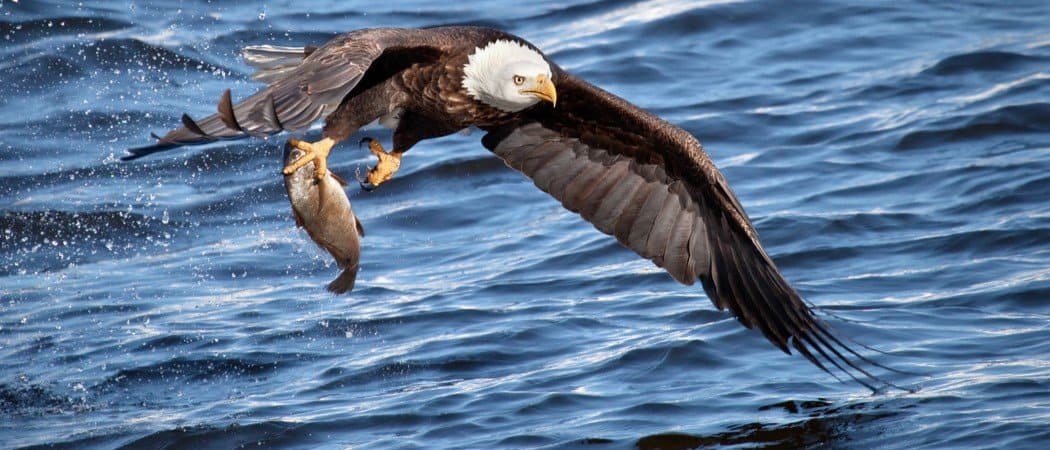Thousands of lakes exist in the world today, and it’s only natural to wonder which of them is the largest. With modern technology, humanity has managed to measure lakes in terms of their size and volume. We have gathered data about the biggest lakes of all.
We’re going to show you the 15 largest lakes in the world and provide interesting information about each one.

What is a Lake?
Before we show you the biggest lakes in the world, we have to know what makes a body of water a lake. Generally speaking, the main differences between a lake and a pond are size, outlet, depth, shape, and type of water contained within:
1. Depth: A lake is generally deeper than a pond.
2. Shape: A lake also tends to be more of an oval shape with peninsulas, while ponds usually have rounded edges.
3. Nature: Lakes are mostly freshwater but can contain some amounts of salt water, while ponds are freshwater.
Furthermore, lakes tend to be:
- deeper than 20 feet
- have an open outlet that connects them to a body of water rather than being closed off
- 200 acres (0.3 sq mi) or more in overall size.
15 Largest Lakes in the World
Now that we know what makes a body of water a lake, it’s time to discover the largest ones. Interestingly, the largest lakes might not be the deepest nor the longest as you will see on this list. The 15 largest lakes in the world are:
15. Lake Balkhash

Lake Balkash is one of the largest lakes in Asia.
©Maxim Petrichuk/Shutterstock.com
| Area | Length | Depth | Volume |
| 16,400 km2 6,300 sq mi | 605 km 376 mi | 26 m 85 ft | 106 km3 25 cu mi |
Lake Balkhash is a lake with a high density of saline, and it is located entirely in Kazakhstan. This lake is the center of a lot of economic projects. The crescent-shaped body of water is the largest lake in Kazakhstan and one of Asia’s big lakes.
The Aksu, Karatal, and Ili rivers flow into this large lake which shares the same name as the largest city on its northern shore.
Balkhash contains both salt and fresh water with its deeper eastern side containing the former, and its shallower, broader, western side, containing the latter.
14. Lake Ladoga
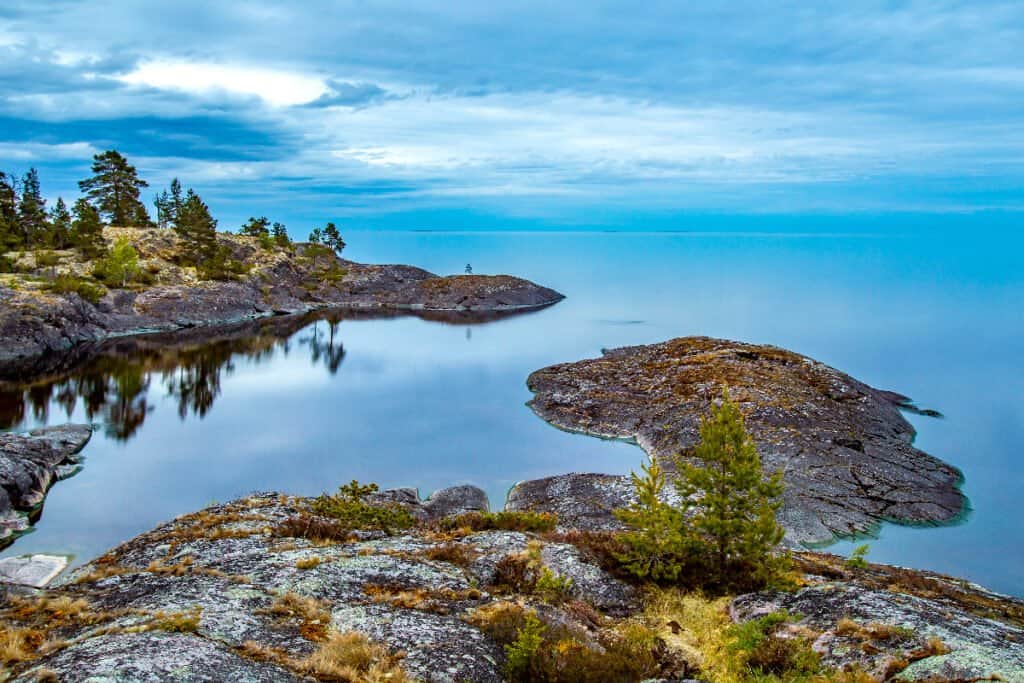
Lake Ladoga is the biggest lake in Europe.
©FOTOGRIN/Shutterstock.com
| Area | Length | Depth | Volume |
| 18,130 km2 7,000 sq mi | 219 km 136 mi | 230 m 750 ft | 908 km3 218 cu mi |
Lake Ladoga is often considered to be the largest lake in Europe but only because it is located entirely within Europe and not split into different regions. Lake Ladoga is also the second-largest lake in all of Russia (the largest is Lake Baikal).
In terms of freshwater big lakes on a global scale, Ladoga ranks 14th. The body of water is yellow-brown and home to a wide range of fish, including, carp bream and European perch. It also has its very own ringed seal species, the Ladoga seal.
13. Lake Ontario
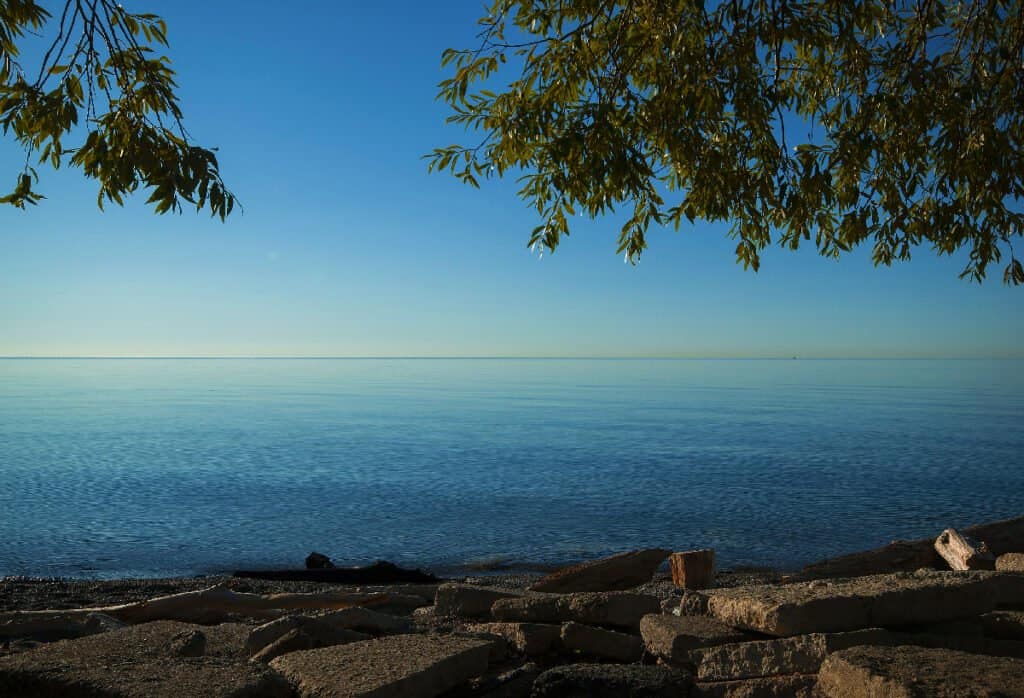
Lake Ontario is the smallest of the Great lakes.
©Michael J. Eves/Shutterstock.com
| Area | Length | Depth | Volume |
| 18,960 km2 7,320 sq mi | 311 km 193 mi | 244 m 801 ft | 1,639 km3 393 cu mi |
Lake Ontario is the 13th largest lake, and it is another one that is split between the U.S. and Canada. Lake Ontario is another one of the Great Lakes, and it has the smallest surface areas of any of them. This lake is commonly used as a feat for swimmers to cross.
12. Lake Winnipeg

Lake Winnipeg has the biggest watershed in Canada.
©lastdjedai/Shutterstock.com
| Area | Length | Depth | Volume |
| 24,514 km2 9,465 sq mi | 425 km 264 mi | 36 m 118 ft | 283 km3 68 cu mi |
Lake Winnipeg is a very large lake that is located entirely within Canada. The lake is part of the largest watershed of any lake in Canada. Lake Winnipeg is facing significant ecological problems including infiltration by zebra mussels and algae blooms.
11. Lake Erie
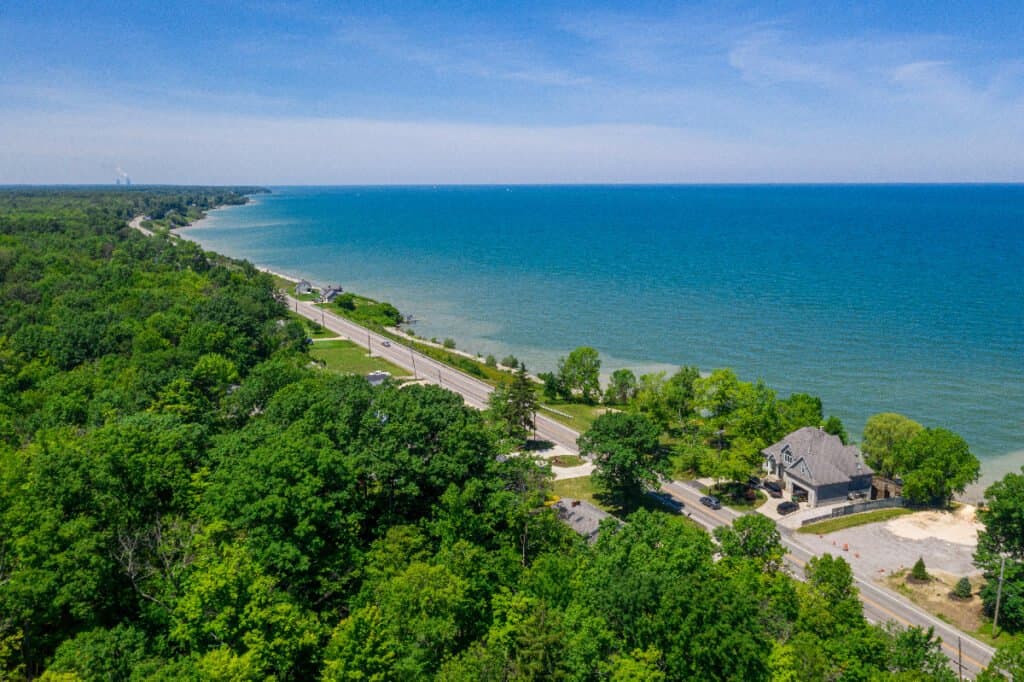
Lake Erie is the second-smallest of the Great Lakes
©IanSkylake17/Shutterstock.com
| Area | Length | Depth | Volume |
| 25,700 km2 9,900 sq mi | 388 km 241 mi | 64 m 210 ft | 489 km3 117 cu mi |
Lake Erie is another lake that borders the United States and Canada. It’s another one of the Great Lakes, and it’s the smallest out of all of them in terms of volume. The lake borders many states in the U.S., and it’s a popular tourist attraction throughout the year, even when portions freeze in the winter.
10. Great Slave Lake

Great Slave Lake has a rich history and an unfortunate name.
©norikko/Shutterstock.com
| Area | Length | Depth | Volume |
| 27,000 km2 10,000 sq mi | 480 km 300 mi | 614 m 2,014 ft | 1,560 km3 370 cu mi |
The Great Slave Lake was named by French Explorers that dealt with Cree individuals who had enslaved other tribes. That name was later translated into English. This lake has a fair amount of area, but this is known mostly because it is the deepest lake in North America.
9. Lake Malawi
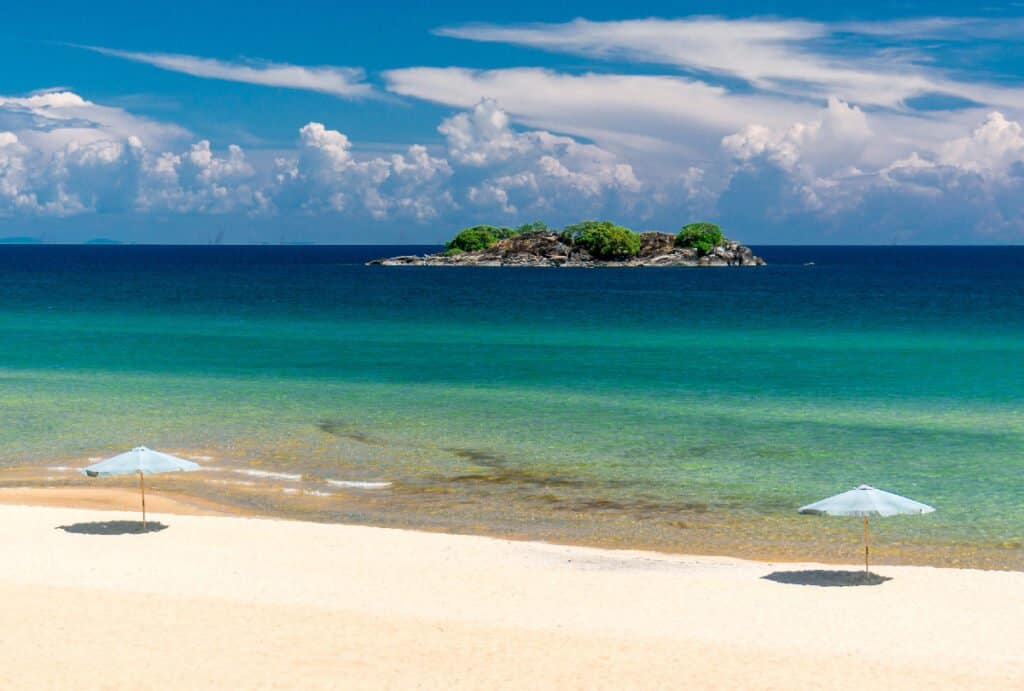
Lake Malawi has shorelines in three countries
©Scott Biales DitchTheMap/Shutterstock.com
| Area | Length | Depth | Volume |
| 29,500 km2 11,400 sq mi | 579 km 360 mi | 706 m 2,316 ft | 8,400 km3 2,000 cu mi |
Although Lake Malawi is named after one country, it actually has shorelines is three. They are Malawi, Mozambique, and Tanzania. This lake has a respectable surface area, but its depth and volume are not too significant.
8. Great Bear Lake

This lake is very far north in Canada.
©Kevin Lings/Shutterstock.com
| Area | Length | Depth | Volume |
| 31,000 km2 12,000 sq mi | 373 km 232 mi | 446 m 1,463 ft | 2,236 km3 536 cu mi |
Great Bear Lake is located in Canada. Although Canada has a lot of lakes, this one is the largest lake that is situated entirely in the country. This lake is in the far north of Canada, with some of it technically being in the Arctic Circle!
7. Lake Baikal
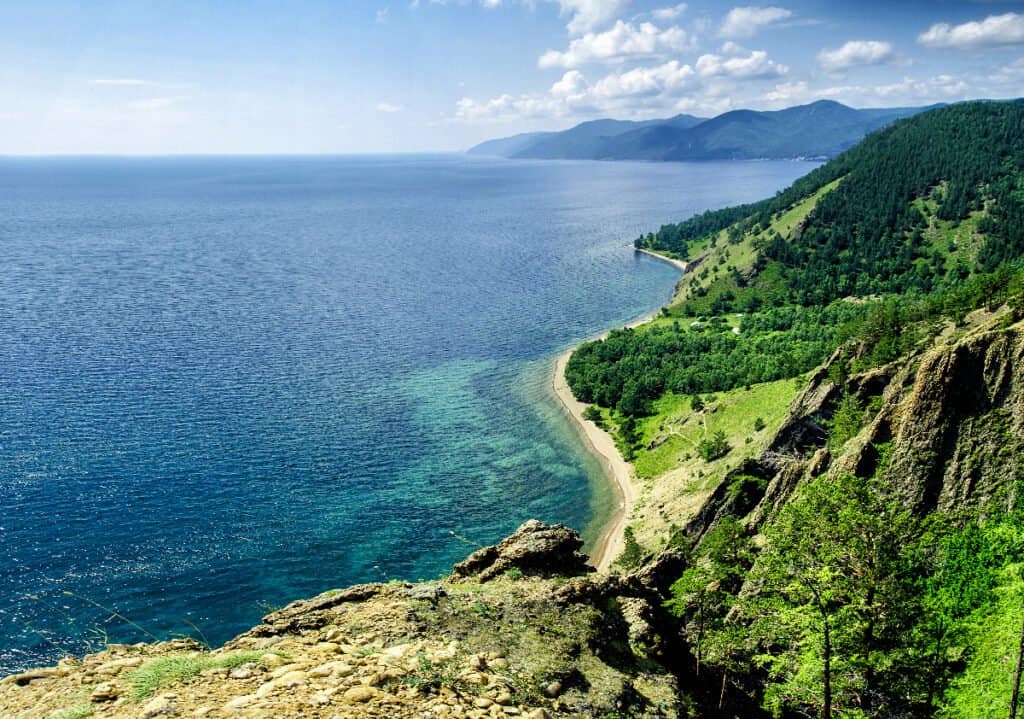
You can find Lake Baikal in Russia and near Mongolia.
©Julia Kuzenkova/Shutterstock.com
| Area | Length | Depth | Volume |
| 31,500 km2 12,200 sq mi | 636 km 395 mi | 1,637 m 5,371 ft | 23,600 km3 5,700 cu mi |
Lake Baikal is located exclusively in the country of Russia. Although it is seventh on this list, it is the deepest lake in the entire world, and it has the largest volume of freshwater in a lake in the world. This lake is very deep.
6. Lake Tanganyika
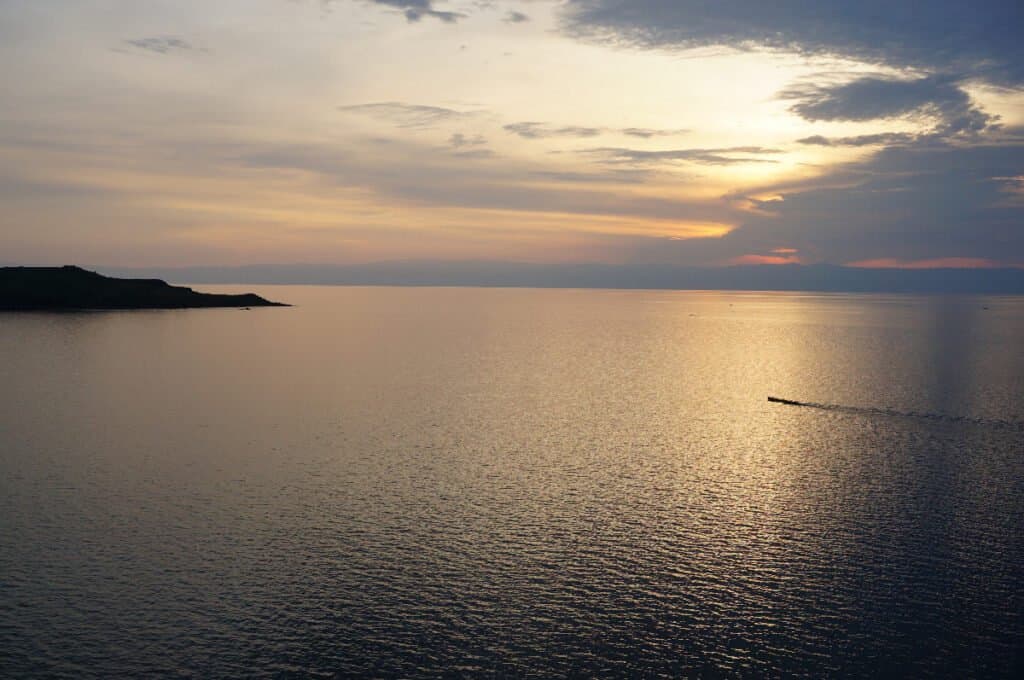
Tanganyika is one of the biggest lakes in
Africa
, and it’s the largest freshwater lake.
©Naoki Kakuta/Shutterstock.com
| Area | Length | Depth | Volume |
| 32,600 km2 12,600 sq mi | 676 km 420 mi | 1,470 m 4,820 ft | 18,900 km3 4,500 cu mi |
Lake Tanganyika is another massive lake that is located on the continent of Africa. It has shorelines in Zambia, Tanzania, the Democratic Republic of Congo, and Burundi. No other freshwater lake is as long as this one, and its vast depths give it a massive volume. Lake Tanganyika is the largest freshwater lake by volume.
5. Lake Michigan
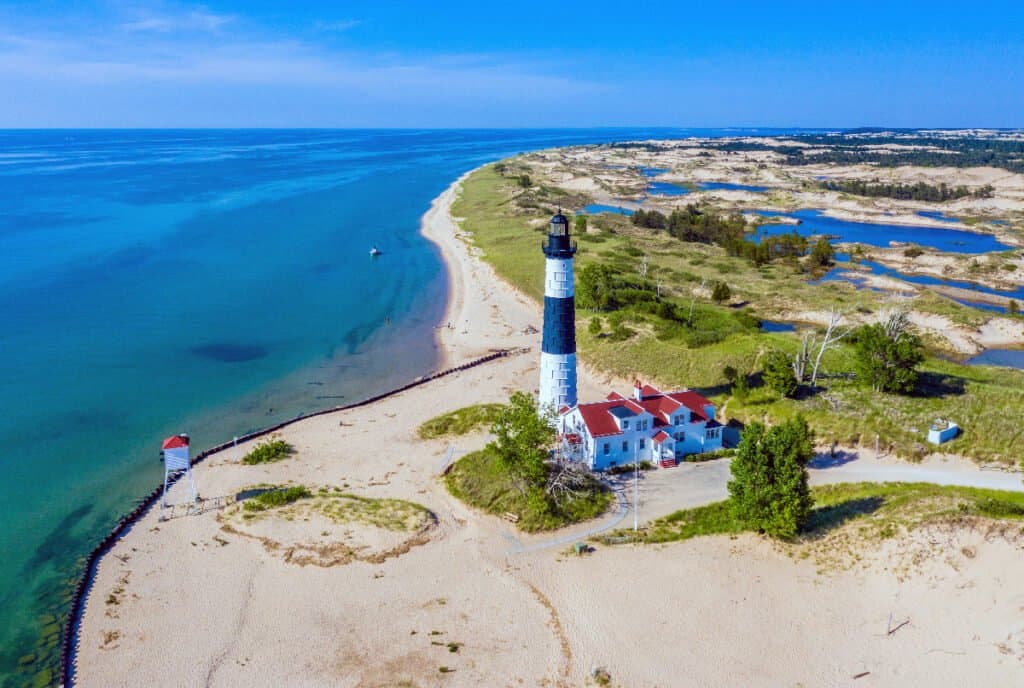
This is the biggest of the Great Lakes in the U.S.
©Frederick Millett/Shutterstock.com
| Area | Length | Depth | Volume |
| 58,000 km2 22,000 sq mi | 494 km 307 mi | 281 m 922 ft | 4,900 km3 1,200 cu mi |
Lake Michigan is another one of the Great Lakes, and this one is interesting because it is located entirely within the confines of the United States. As such, this is the largest lake that is located in a single country! It also has more volume than Lake Huron.
4. Lake Huron
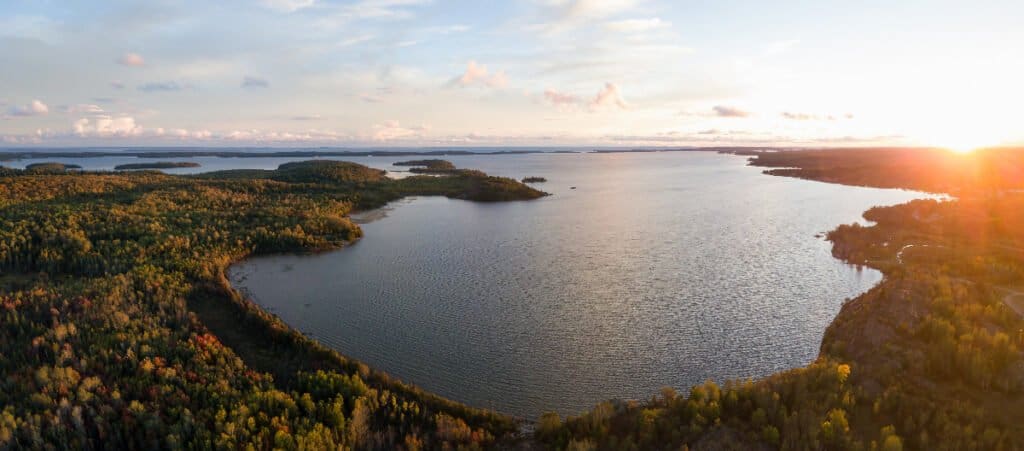
The lake is deeper and contains more water than some of the bigger lakes.
©EB Adventure Photography/Shutterstock.com
| Area | Length | Depth | Volume |
| 59,600 km2 23,000 sq mi | 332 km 206 mi | 229 m 751 ft | 3,540 km3 850 cu mi |
Lake Huron is another of the Great Lakes that has shorelines in the United States and Canada. This lake is interesting because it has less surface area than Lake Victoria, but it has a lot more volume. Lake Huron is interesting because it has Manitoulin Island, the biggest lake island in the entire world!
3. Lake Victoria
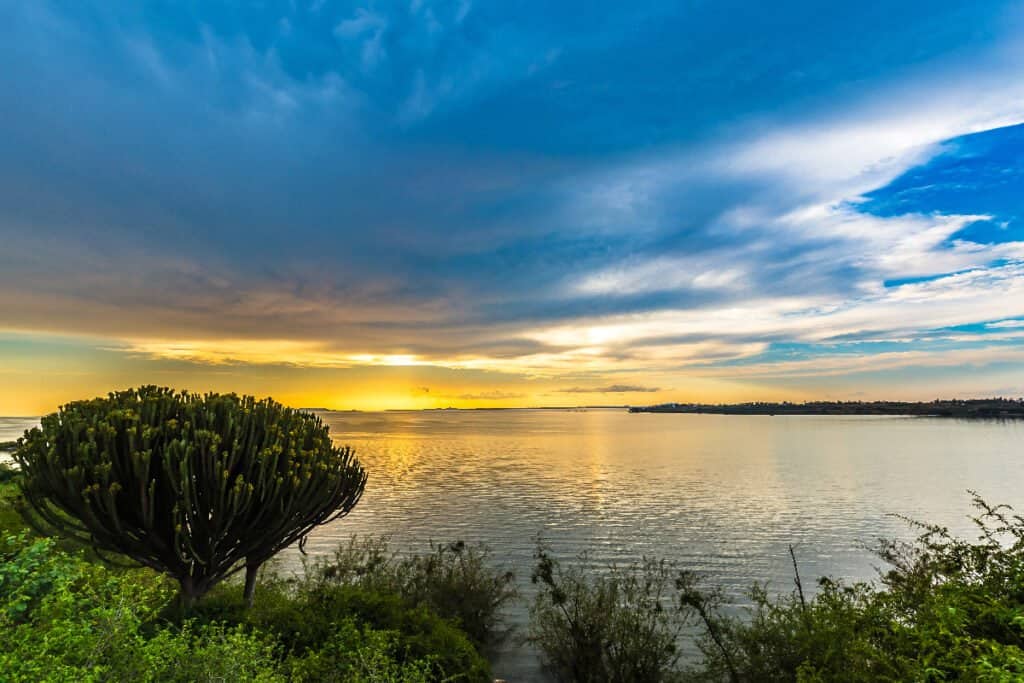
Named for Queen Victoria, Lake Victoria is an incredibly important lake for wildlife.
©Stefan Haider/Shutterstock.com
| Area | Length | Depth | Volume |
| 68,870 km2 26,590 sq mi | 322 km 200 mi | 84 m 276 ft | 2,750 km3 660 cu mi |
Lake Victoria is the largest lake in Africa. This freshwater lake has shorelines in Uganda, Kenya, and Tanzania. Lake Victoria was named for the British monarch, and it is famous for supporting a wide variety of wildlife in the area. Although its area is much larger than most other lakes around the world, its volume is substantially less owing to its short depth.
2. Lake Superior
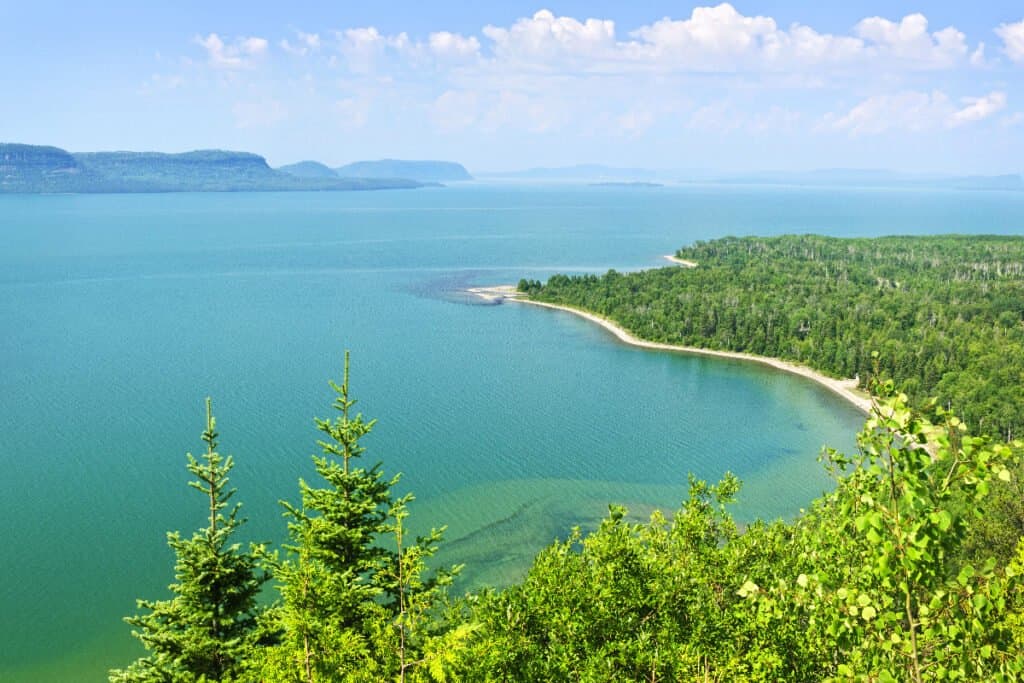
In terms of freshwater lakes, none are bigger in surface area than Lake Superior.
©Elena Elisseeva/Shutterstock.com
| Area | Length | Depth | Volume |
| 82,100 km2 31,700 sq mi | 616 km 383 mi | 406 m 1,333 ft | 12,100 km3 2,900 cu mi |
Lake Superior has shorelines in both the United States and Canada, and it’s the largest freshwater lake in the world by surface area alone. This lake has a massive volume that exceeds many of the other “Great Lakes” that are nearby. Lake Superior has been used for shipping for over a century.
1. Caspian Sea
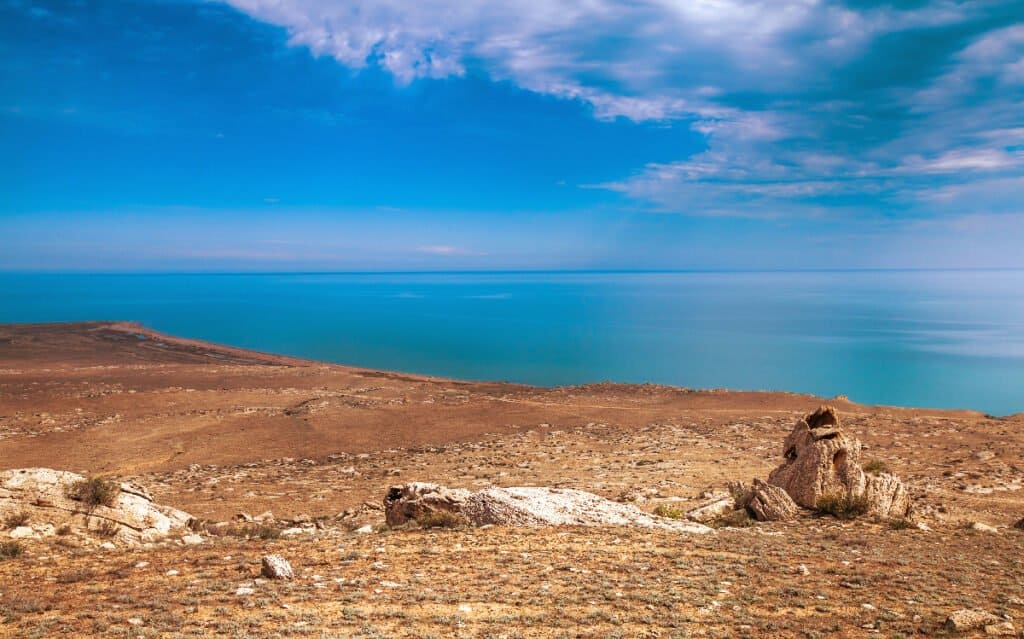
The Caspian Sea is the largest lake, and yes, it’s technically a lake!
©Marina Khlybova/Shutterstock.com
| Area | Length | Depth | Volume |
| 371,000 km² 143,000 sq mi | 1,199 km 745 mi | 1,025m 3,363 ft | 78,200 km3 18,800 cu mi |
The Caspian Sea is the world’s largest lake even though it shares some characteristics with a sea, including salinity and the fact that it has an ocean basin below sea level. The lake has shorelines in many countries due to its large size, such as Kazakhstan, Russia, Iran, Turkmenistan, and Azerbaijan. The water in this lake is brackish in some parts with somewhat high salinity, but less than an ocean.
Summary Of The 15 Largest Lakes In The World
| Rank | Lake | Location | Size by: Area Length Depth Volume |
|---|---|---|---|
| 15 | Lake Balkhash | Kazakhstan | A: 6,300 sq mi L: 376 mi D: 85 ft V: 25 cu mi |
| 14 | Lake Ladoga | Northwestern Russia | A: 7,000 sq mi L: 136 mi D: 750 ft V: 218 cu mi |
| 13 | Lake Ontario | United States & Canada | A: 7,320 sq mi L: 193 mi D: 801 ft V: 393 cu mi |
| 12 | Lake Winnipeg | Canada | A: 9,465 sq mi L: 264 mi D: 118 ft V: 68 cu mi |
| 11 | Lake Erie | United States & Canada | A: 9,900 sq mi L: 241 mi D: 210 ft V: 117 cu mi |
| 10 | Great Slave Lake | Northwest Territories, Canada | A: 10,000 sq mi L: 300 mi D: 2,014 ft V: 370 cu mi |
| 9 | Lake Malawi | Africa | A: 11,400 sq mi L: 360 mi D: 2,316 ft V: 2,000 cu mi |
| 8 | Great Bear Lake | Northern Canada | A: 12,000 sq mi L: 232 mi D: 1,463 ft V: 536 cu mi |
| 7 | Lake Baikal | Russia | A: 12,200 sq mi L: 395 mi D: 5,371 ft V: 5,700 cu mi |
| 6 | Lake Tanganyika | Africa | A: 12,600 sq mi L: 420 mi D: 4,820 ft V: 4,500 cu mi |
| 5 | Lake Michigan | United States | A: 22,000 sq mi L: 307 mi D: 922 ft V: 1,200 cu mi |
| 4 | Lake Huron | United States & Canada | A: 23,000 sq mi L: 206 mi D: 751 ft V: 850 cu mi |
| 3 | Lake Victoria | Africa | A: 26,590 sq mi L: 200 mi D: 276 ft V: 660 cu mi |
| 2 | Lake Superior | United States & Canada | A: 31,700 sq mi L: 383 mi D: 1,333 ft V: 2,900 cu mi |
| 1 | Caspian Sea | Central Asia | A: 143,000 sq mi L: 745 mi D: 3,363 ft V: 18,800 cu mi |
What Is the Largest Lake in the United States?
Lake Superior is the largest lake in the United States, but it shares a shoreline with Canada, too. The largest lake contained entirely in the U.S. is Lake Michigan. This lake is located next to the state of Michigan.
What Is the Deepest Lake in the United States?
Crater Lake has a depth of 592 meters or 1,943 feet. This lake is located in the state of Oregon, and it is famous for its deep blue color and its massive depth.
What Is the Deepest Lake in the World?
Lake Baikal is the deepest lake in the world. This lake is located entirely within the nation of Russia, and it has become a popular tourist attraction for hikers. The Great Baikal Trail runs along the perimeter of this lake, allowing people to walk, hike, and bike around the outskirts and get tremendous views.
Final Thoughts on the Largest Lakes in the World
The largest lakes in the world are distributed around the world. Many of the biggest lakes are found in North America, though. These lakes have an immense surface area, length, depth, and volume. Many of these lakes share shorelines with multiple countries, too. However, a few of these lakes are very large and only exist in a single country, like Lake Michigan.
What Animals Live in and Around Large Lakes?
Large lakes provide a diverse and thriving ecosystem for many different species of animals. These habitats support a wide range of aquatic and terrestrial life, including mammals, birds, reptiles, amphibians, and fish. Here are a few examples of the animals that you might find in and around large lakes:
Aquatic Animals:
- Fish: Large lakes are home to a variety of fish species, including catfish, bass, carp, and pike.
- Invertebrates: Aquatic insects, crustaceans, and mollusks also thrive in large lakes.
- Amphibians: Frogs, toads, and salamanders are common inhabitants of large lakes, where they lay their eggs and hunt for food.
Terrestrial Animals:
- Birds: Large lakes attract many bird species, including ducks, geese, swans, and loons, as well as birds of prey such as eagles and ospreys.
- Mammals: Some of the mammals that are commonly found around large lakes include beavers, muskrats, otters, and deer.
- Reptiles: Snakes, turtles, and lizards can also be found around large lakes, where they hunt for food and bask in the sun.
In conclusion, large lakes provide a diverse and thriving ecosystem for many different species of animals, including mammals, birds, reptiles, amphibians, and fish. Whether you’re looking to observe wildlife or simply enjoy the beauty of nature, a visit to a large lake can offer a wealth of opportunities to explore and discover the amazing creatures that live in and around these habitats.
Thank you for reading! Have some feedback for us? Contact the AZ Animals editorial team.

